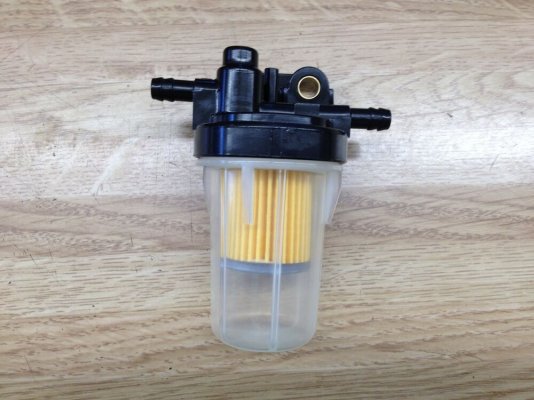Dicked around with the catch can today.
I think I can see why they would have it come in to the top and through the filters first, then out through the body and into the intake.
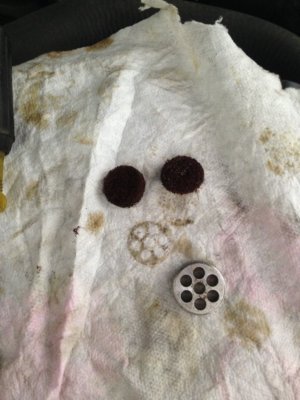
The oily air comes in and is "stalled" by the filters. The oil coalesces in the filters then runs down through the seven holes in the round aluminum piece to drip to the bottom of the can. At this point, it is too heavy to ride the air stream and can't be drawn up into the tube in the side of the body to be pulled into the intake manifold. If this happened in the reverse order with the inlet coming into the side of the can, the oil mist would still be in the air inside the can and it would have to pass through those seven holes then get caught in the filters. But, it relies on gravity to let it fall back down into the can. This is kinda hard to do when you have a vacuum pulling on it, trying to hold it up. At least with the flow going in the direction as intended, gravity is helping because the collected oil falls to the bottom and can't be picked back up into the air stream. Also, if the oil collected in the filters is dense enough, it can restrict the flow, raising the vacuum acting on it. This will make it hold in the top even more and be pulled into the outlet hose and ultimately into the intake manifold, defeating the purpose of the can. The body of the can would basically just be like a larger diameter inlet hose.
So, I'm fine with the flow going as the designers say. Maybe it's just that this design is not as efficient/effective as it possibly could be. Maybe the current design isn't "bad", it may just be "insufficient" for the amount of scrubbing that needs to take place My simple test for now is to add a second stage of coalescing filtration- just add another filter to filter the filtered air.
It's simple. Just slip a stainless steel scrubber around the filter tube:
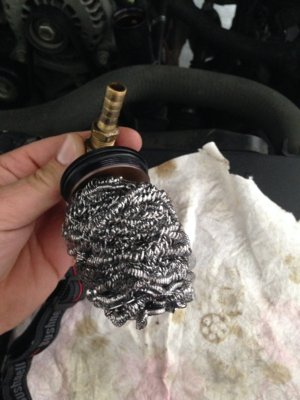
It looks like a mess in that pic, but the center is still open so the oil draining out of those seven holes can drip straight to the bottom. I thought about using some thick aluminum or stainless wire to make a support to hold the scrubber up in position so it wouldn't fall down into the bottom of the can. But, when slipping it into the can, I had to use a small flat blade screwdriver to help it clear the threads and feed it into the can:
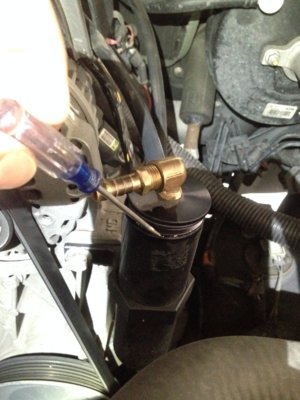
Between this friction and the exposed threads of the outlet fitting protruding into the can "snagging" the scrubber, I don't think it'll fall down.
On the flip side of all this, I really don't have a way to test the effectiveness. I did pop off my intake tube (Airaid MIT) to (1) inspect it's inside to see how well the AEM filter was doing and (2) to look into the manifold to see if there was still any puddled oil.
I'm very pleased with the cleanliness of the inside of the intake tube. I was a little disappointed, but not surprised to see the light glimmering off the puddled oil at the back of the manifold. I'll address this when the motor's torn down for a cam swap/AFM delete. At that time, I'll see if there are additional components I can add to the PCV system to improve the filtration as much as physically possible. Maybe it just needs progressively finer methods of filtering the air, ending with something like a fuel filter like this:
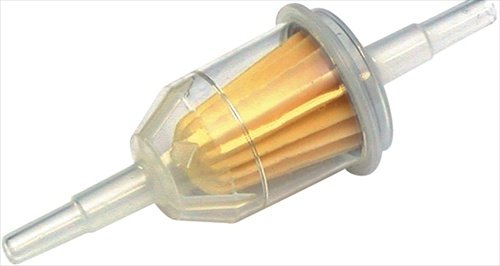
Or this:
